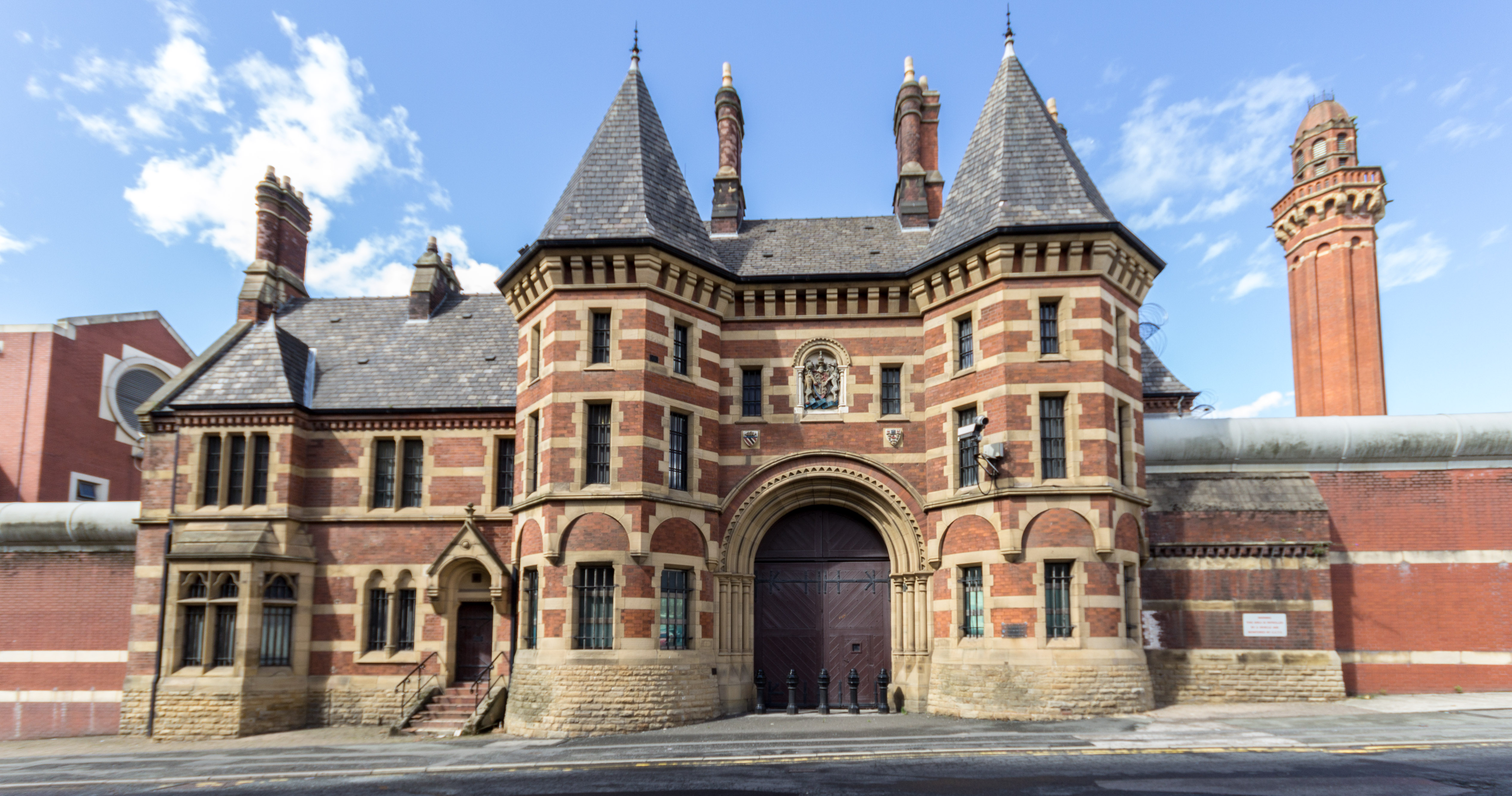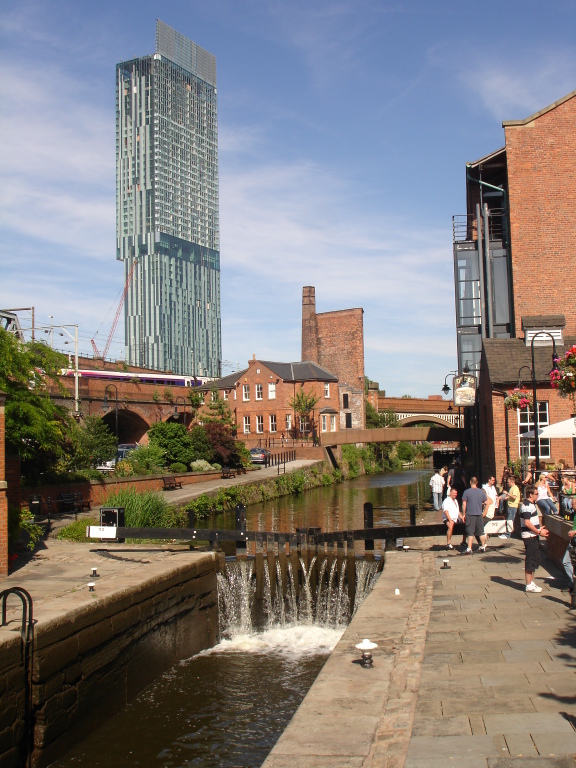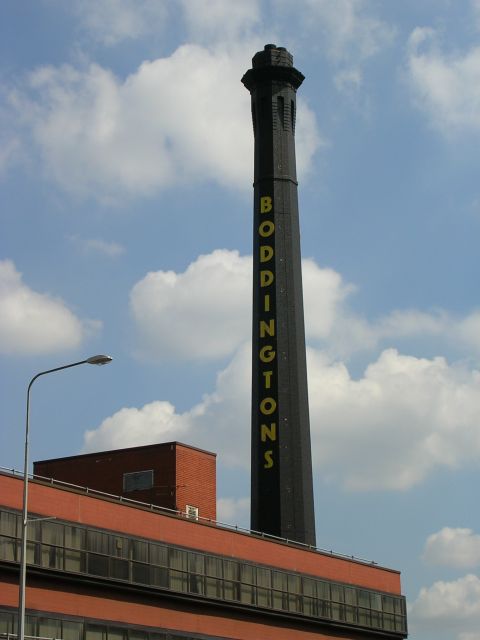|
Strangeways, Manchester
Strangeways is an area of inner north Manchester, England, around Strangeways Prison just north of the city centre. History Until the 19th century, Strangeways was rural, with Strangeways Hall, Park and Gardens. Strangeways was recorded in 1322 as ''Strangwas'', from the Anglo-Saxon ''Strang'' and ''gewæsc'' meaning " place bya stream with a strong current". Strangeways Brewery Strangeways Brewery was famous as the home of Boddingtons Bitter. It closed in 2005 and was demolished in 2007. Timeline *1459: First known mention of the de Strangeways family in the area. *1544: A settlement document describes widespread property attached to Strangeways Hall, including 24 houses, 20 town properties, 20 cottages, and various land up to several miles away. *1641: Strangeways Hall appears on a map. It was in Elizabethan or Jacobean style. *1624: John Hartley (1609-1655) bought Strangeways Hall. His father Nicholas Hartley and elder brother Richard were wool merchants in Manchester. *E ... [...More Info...] [...Related Items...] OR: [Wikipedia] [Google] [Baidu] |
Manchester
Manchester () is a city in Greater Manchester, England. It had a population of 552,000 in 2021. It is bordered by the Cheshire Plain to the south, the Pennines to the north and east, and the neighbouring city of City of Salford, Salford to the west. The two cities and the surrounding towns form one of the United Kingdom's most populous conurbations, the Greater Manchester Built-up Area, which has a population of 2.87 million. The history of Manchester began with the civilian settlement associated with the Roman Britain, Roman fort (''castra'') of ''Mamucium'' or ''Mancunium'', established in about AD 79 on a sandstone bluff near the confluence of the rivers River Medlock, Medlock and River Irwell, Irwell. Historic counties of England, Historically part of Lancashire, areas of Cheshire south of the River Mersey were incorporated into Manchester in the 20th century, including Wythenshawe in 1931. Throughout the Middle Ages Manchester remained a manorialism, manorial Township ( ... [...More Info...] [...Related Items...] OR: [Wikipedia] [Google] [Baidu] |
HM Prison Manchester
HM Prison Manchester is a Category A and B men's prison in Manchester, England, operated by His Majesty's Prison Service. It is still commonly referred to as Strangeways, which was its former official name derived from the area in which it is located, until it was rebuilt following a major riot in 1990. It is a local prison, holding prisoners remanded into custody from courts in the Manchester area and Category A prisoners (those held under maximum security conditions). The prison featured an execution chamber prior to the abolition of capital punishment in the United Kingdom in the 1960s; the last execution at the prison took place in 1964. Strangeways was designed by Alfred Waterhouse and opened in 1868 alongside the demolished Manchester Assize Courts. The prison is known for its prominent ventilation tower and imposing design, structured by the principles of the separate system. History Construction of the Grade II listed prison was completed in 1869, and it was op ... [...More Info...] [...Related Items...] OR: [Wikipedia] [Google] [Baidu] |
Manchester City Centre
Manchester City Centre is the central business district of Manchester in Greater Manchester, England situated within the confines of Great Ancoats Street, A6042 Trinity Way, and A57(M) Mancunian Way which collectively form an inner ring road. The City Centre ward had a population of 17,861 at the 2011 census. Manchester city centre evolved from the civilian '' vicus'' of the Roman fort of Mamucium, on a sandstone bluff near the confluence of the rivers Medlock and Irwell. This became the township of Manchester during the Middle Ages, and was the site of the Peterloo Massacre of 1819. Manchester was granted city status in 1853, after the Industrial Revolution, from which the city centre emerged as the global centre of the cotton trade which encouraged its "splendidly imposing commercial architecture" during the Victorian era, such as the Royal Exchange, the Corn Exchange, the Free Trade Hall, and the Great Northern Warehouse. After the decline of the cotton trade an ... [...More Info...] [...Related Items...] OR: [Wikipedia] [Google] [Baidu] |
Anglo-Saxon Language
Old English (, ), or Anglo-Saxon, is the earliest recorded form of the English language, spoken in England and southern and eastern Scotland in the early Middle Ages. It was brought to Great Britain by Anglo-Saxon settlers in the mid-5th century, and the first Old English literary works date from the mid-7th century. After the Norman conquest of 1066, English was replaced, for a time, by Anglo-Norman (a relative of French) as the language of the upper classes. This is regarded as marking the end of the Old English era, since during this period the English language was heavily influenced by Anglo-Norman, developing into a phase known now as Middle English in England and Early Scots in Scotland. Old English developed from a set of Anglo-Frisian or Ingvaeonic dialects originally spoken by Germanic tribes traditionally known as the Angles, Saxons and Jutes. As the Germanic settlers became dominant in England, their language replaced the languages of Roman Brita ... [...More Info...] [...Related Items...] OR: [Wikipedia] [Google] [Baidu] |
Manchester (Strangeways) Prison, Seen From Derby Street, Down Blacklock Street - Geograph
Manchester () is a city in Greater Manchester, England. It had a population of 552,000 in 2021. It is bordered by the Cheshire Plain to the south, the Pennines to the north and east, and the neighbouring city of Salford to the west. The two cities and the surrounding towns form one of the United Kingdom's most populous conurbations, the Greater Manchester Built-up Area, which has a population of 2.87 million. The history of Manchester began with the civilian settlement associated with the Roman fort (''castra'') of ''Mamucium'' or ''Mancunium'', established in about AD 79 on a sandstone bluff near the confluence of the rivers Medlock and Irwell. Historically part of Lancashire, areas of Cheshire south of the River Mersey were incorporated into Manchester in the 20th century, including Wythenshawe in 1931. Throughout the Middle Ages Manchester remained a manorial township, but began to expand "at an astonishing rate" around the turn of the 19th century. Manchester's unp ... [...More Info...] [...Related Items...] OR: [Wikipedia] [Google] [Baidu] |
Strangeways Brewery Chimney
HM Prison Manchester is a Category A and B men's prison in Manchester, England, operated by His Majesty's Prison Service. It is still commonly referred to as Strangeways, which was its former official name derived from the area in which it is located, until it was rebuilt following a major riot in 1990. It is a local prison, holding prisoners remanded into custody from courts in the Manchester area and Category A prisoners (those held under maximum security conditions). The prison featured an execution chamber prior to the abolition of capital punishment in the United Kingdom in the 1960s; the last execution at the prison took place in 1964. Strangeways was designed by Alfred Waterhouse and opened in 1868 alongside the demolished Manchester Assize Courts. The prison is known for its prominent ventilation tower and imposing design, structured by the principles of the separate system. History Construction of the Grade II listed prison was completed in 1869, and it was open ... [...More Info...] [...Related Items...] OR: [Wikipedia] [Google] [Baidu] |
Strangeways Brewery
Strangeways Brewery was a landmark in Manchester, England, just north of the city centre, which was famous as the home of Boddingtons Bitter. It closed in 2005 and was demolished in 2007. History The Strangeways Brewery was founded by two grain merchants, Thomas Caister and Thomas Fry in the late 18th century. The last family chairman Ewart Boddington sold the company to Whitbread in 1989. Whitbread sold their brewing business to InBev InBev () is a brewing company that resulted from the merger between Belgium-based company Interbrew and Brazilian brewer AmBev which took place in 2004. It existed independently until the acquisition of Anheuser-Busch in 2008, which formed Anheu ... in 2000 who ended production at the brewery in 2005. The brewery was used as a venue for a series of club nights, known as The Warehouse Project, until 31 December 2006. See also * * * References {{coord, 53, 29, 21, N, 2, 14, 40, W , region:GB_type:landmark , display=title Demolished build ... [...More Info...] [...Related Items...] OR: [Wikipedia] [Google] [Baidu] |
Boddingtons Brewery
Boddingtons Brewery was a regional brewery in Manchester, England, which owned pubs throughout the North West. Boddingtons was best known for Boddingtons Bitter (Boddies), a straw-golden, hoppy bitter which was one of the first beers to be packaged in cans containing a widget, giving it a creamy draught-style head. In the 1990s, the beer was promoted as The Cream of Manchester in a popular advertising campaign credited with raising Manchester's profile. Boddingtons became one of the city's most famous products after Manchester United and ''Coronation Street''. Whitbread bought Boddingtons Brewery in 1989 and Boddingtons Bitter received an increased marketing budget and nationwide distribution. Boddingtons achieved its peak market share in 1997 and at the time was exported to over forty countries. Boddingtons beer brands are now owned by the global brewer Anheuser–Busch InBev, which acquired the Whitbread Beer Company in 2000. Strangeways Brewery closed in 2004 and ... [...More Info...] [...Related Items...] OR: [Wikipedia] [Google] [Baidu] |
Bitter (beer)
Bitter is an English style of pale ale that varies in colour from gold to dark amber, and in strength typically from 3% to 5.5% alcohol by volume. History The term "bitter" has been used in England to describe pale ale since the early 19th century. Although brewers used the term "pale ale", before the introduction of pump clips, customers in public houses would ask for "bitter" to differentiate it from mild ale; by the end of the 19th century, brewers had begun to use the term as well. During the 20th century, bitter became the most popular type of draught beer sold in British pubs and has been described as "the national drink of England". In Scotland, bitter is known as either "light" or "heavy" depending on the strength, colour and body. Bitter is traditionally cask conditioned and either dispensed by gravity through a tap in the cask or by a beer engine at "cellar temperature" of 11° to 14° Celsius (50° to 55° Fahrenheit). The popularity of craft brewing in North Ame ... [...More Info...] [...Related Items...] OR: [Wikipedia] [Google] [Baidu] |
Boarding School
A boarding school is a school where pupils live within premises while being given formal instruction. The word "boarding" is used in the sense of "room and board", i.e. lodging and meals. As they have existed for many centuries, and now extend across many countries, their functioning, codes of conduct and ethos vary greatly. Children in boarding schools study and live during the school year with their fellow students and possibly teachers or administrators. Some boarding schools also have day students who attend the institution by day and return off-campus to their families in the evenings. Boarding school pupils are typically referred to as "boarders". Children may be sent for one year to twelve years or more in boarding school, until the age of eighteen. There are several types of boarders depending on the intervals at which they visit their family. Full-term boarders visit their homes at the end of an academic year, semester boarders visit their homes at the end of an acade ... [...More Info...] [...Related Items...] OR: [Wikipedia] [Google] [Baidu] |
Manchester And Leeds Railway Company
The Manchester and Leeds Railway was a British railway company that built a line from Manchester to Normanton where it made a junction with the North Midland Railway, over which it relied on running powers to access Leeds. The line followed the valley of the River Calder for much of the way, making for easier gradients but by-passing many important manufacturing towns. Crossing the watershed between Lancashire and Yorkshire required a long tunnel. The line opened throughout in 1841. Early on, the company realised that the initial route required expansion, and branches were built by the company or by new, sponsored companies. In Manchester steps were taken to make a railway connection with the Liverpool and Manchester Railway, and a connecting line was built, including an important joint passenger station, named Victoria station. The pace of expansion accelerated and in 1846 it was clear that the company's name was no longer appropriate, and the opportunity was taken, when get ... [...More Info...] [...Related Items...] OR: [Wikipedia] [Google] [Baidu] |
Manchester Victoria Station
Manchester Victoria station in Manchester, England is a combined mainline railway station and Metrolink tram stop. Situated to the north of the city centre on Hunts Bank, close to Manchester Cathedral, it adjoins Manchester Arena which was constructed on part of the former station site in the 1990s. Opened in 1844 and part of the Manchester station group, Victoria is Manchester's third busiest railway station after Piccadilly and Oxford Road and the second busiest station managed by Northern after Oxford Road. The station hosts local and regional services to destinations in Northern England, such as , , Bradford, , , , Halifax, Wigan, , Blackpool (Sundays only) and Liverpool using the original Liverpool to Manchester line. Most trains calling at Victoria are operated by Northern. TransPennine Express services call at the station from Liverpool to Newcastle/Scarborough and services towards Manchester Airport (via the Ordsall Chord) from Middlesbrough/Redcar/Newcastle. Ma ... [...More Info...] [...Related Items...] OR: [Wikipedia] [Google] [Baidu] |







